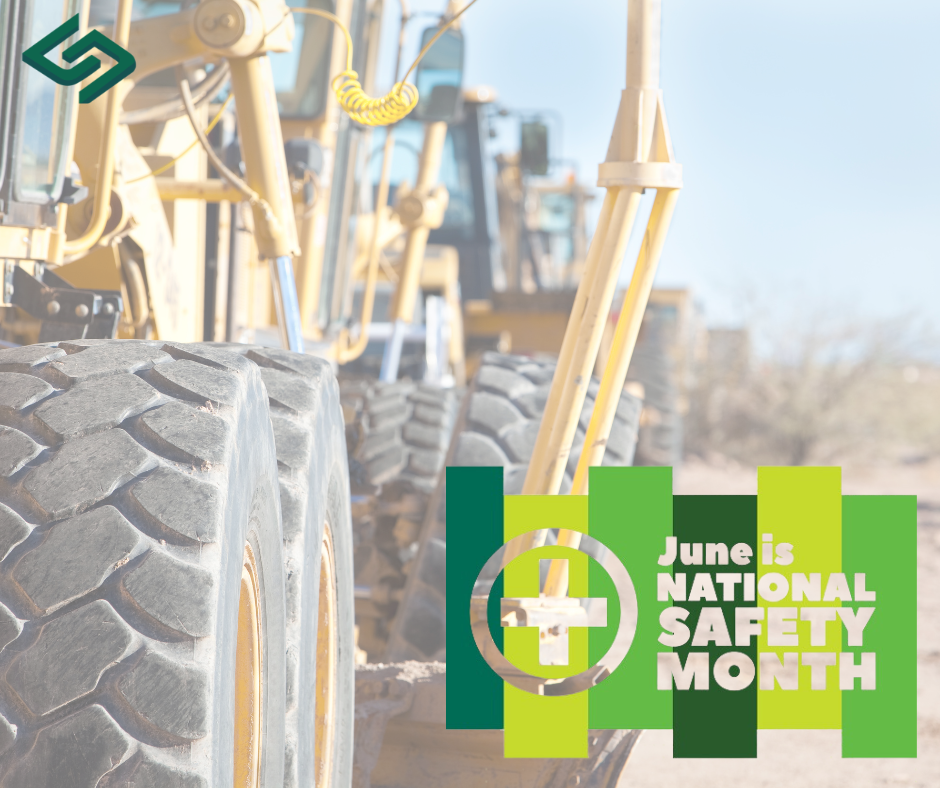Situational vs Systemic Risks
The National Safety Council explains details on Situational Risks and Systemic Risks.
SITUATIONAL RISKS – INHERENT TO THE SITUATION OR PROXIMATE CAUSE OF INJURY
Crushing risk
Struck by vehicle
Equipment tippage/overturn
Electrical shock/arc flash
Struck by equipment part
Struck by debris
SYSTEMIC RISKS – CONTRIBUTE TO INJURY BUT ARE NOT DIRECT CAUSES
Lack of workplace awareness
Lack of training
Hazardous terrain
Poorly secured loads
Machine guard failure
Faulty equipment
Unknown hazardous materials and debris
Situational risks are the risks inherent to the situation or the proximate cause of injury (e.g., fall to a lower level, struck by an object, electrocution, etc.) Below is a list of seven specific situational risks with short descriptions. These include the most common situational factors from our hazardous situations.
Struck by machinery, vehicle, debris, equipment or part: An injury or death occurs due to a worker being struck by an object with forcible impact.
Fall to a lower level: A worker falls from height due to collapsing structures or equipment, an opening in the surface or falling to a lower level. The worker also falls without guardrails, safety nets, harness systems or other technologies, resulting in serious injury or fatality.
Fire risk – machinery or materials: The placement of combustible materials too close to heaters, careless refilling of heaters, not regularly inspecting heaters and equipment, and other lack of procedures – along with improperly working equipment – can be a risk for fires.
Explosion risk – compressed or environmental gases: The risk for explosion increases when a leaking or improperly secured or tagged cylinder or special storage unit is used, handled or disposed of incorrectly.
Crushed by machinery, load, moving load or vehicle risks: An injury or death resulting from being squeezed, pinched or compressed between two objects or parts due to neglectful safety standards.
Electrical shock/arc flash, electrocution: Burns or shock that can occur when electrical current passes through the body at high voltages causing severe injury or death. Can also cause falls to a lower level.
Oxygen deprivation – gases or material: When an atmosphere contains less oxygen than required through spaces that are concealed, flammable, corrosive, toxic or combustible.
Systemic risks are the factors that can contribute to injury in a hazardous situation but are not direct causes of injury. Below is a list of 11 specific systemic risk factors with short descriptions and relevant survey detail. These include the most common systemic risk factors for our hazardous situations.
Lack of Training or Supervision: Health and safety training provides needed education and knowledge for job tasks, workplace hazards and personal safety in order to protect workers and firms. A lack of proper training or supervision can put workers in dangerous situations and its effects are often overlooked.
Survey Says: According to the NSC 2020 Safety Technology in the Workplace Survey, 42% of workers experienced a lack of proper training at work, with 39% saying that lack of proper training has caused or contributed to a serious injury in their workplace. Out of the 18 top hazardous situations identified in the Work to Zero Safety Technology 2020 white paper, lack of training was earmarked as a systemic risk in every scenario (NSC, 2020).
Leadership Failure: This includes mistakes, errors, lack of expertise and/or flawed communication that can have unintended consequences.
Survey Says: According to the NSC 2020 Safety Technology in the Workplace Survey, 71% of employers are concerned with a failure of leadership to promote safety and the impact that has on their organization.
Lack of Workplace Awareness: Being unaware of your surroundings in the workplace can lead to dangerous habits, safety concerns and more.
Survey Says: According to the NSC 2020 Safety Technology in the Workplace Survey, 39% of workers reported feeling like they had a lack of workplace awareness, and 40% stated a lack of workplace awareness has caused or contributed to a serious workplace injury.
Fatigue and Other Forms of Impairment: Fatigue, or other types of impairment, refer to the difficulty or inability of a worker to perform tasks at a desired level.
Survey Says: According to the NSC 2020 Safety Technology in the Workplace Survey, 77% of workers reported being fatigued at work, and 40% shared that fatigue has caused or contributed to a serious workplace injury. Fatigue was identified as a contributing factor in over 50% of hazardous situations identified.
Faulty Equipment: Refers to mechanical or electronic equipment that is not working properly and is dangerous or unsafe to use. Examples include electrical failure, lockout/tagout failure, alarm or signaling failure, valve or container failures, etc.
Improper Personal Protective Equipment/Fall Protection: This includes a lack of knowledge on when PPE is necessary; how to correctly put on, take off or adjust PPE; or the correct PPE to wear in certain situations.
Survey Says: According to the NSC 2020 Safety Technology in the Workplace Survey, 48% of workers stated that compliance with safety equipment is an issue in their workplace, and 41% stated it’s their personal decision whether or not to use PPE.
Hazardous Terrain: Consists of ground or land that is uneven and dangerous or has materials and debris causing safety issues, or poor trench design. Examples include: terrain dangers, uneven terrain, unknown hazardous materials and debris, trench issues, etc.
Machine Guard Failure/Malfunction: The failure or malfunction of machine guards can cause severe injuries or death. Machine guards are put in place to help keep machine operators safe.
Adverse/Inclement Weather: This includes any weather that impedes workers to conduct their jobs safely and successfully. Examples include rain, snow, sleet, fog, high winds, lightning, etc.
Permit to Work Failure: The lack of a formal management system to regulate high-risk situations to control safety measures.
Survey Says: According to the NSC 2020 Safety Technology in the Workplace Survey, 39% of workers reported dealing with permit to work failures in their workplaces, and 15% say permit to work failures have caused or contributed to serious workplace injuries.
Worker Behavioral Failure: Includes worker behavior that puts one’s health and safety at risk. Examples consist of improper lifting techniques, improper machine operation, etc.
Survey Says: According to the NSC 2020 Safety Technology in the Workplace Survey, 48% of workers stated that compliance with safety equipment is an issue in their workplace, and 41% said it’s their personal decision whether or not to use PPE.
Sources:
https://www.nsc.org/workplace/safety-topics/work-to-zero/hazardous-situations/heavy-equipment-operation
https://www.nsc.org/workplace/safety-topics/work-to-zero/hazardous-situations/systemic-risks
https://www.nsc.org/workplace/safety-topics/work-to-zero/hazardous-situations/situational-risks

